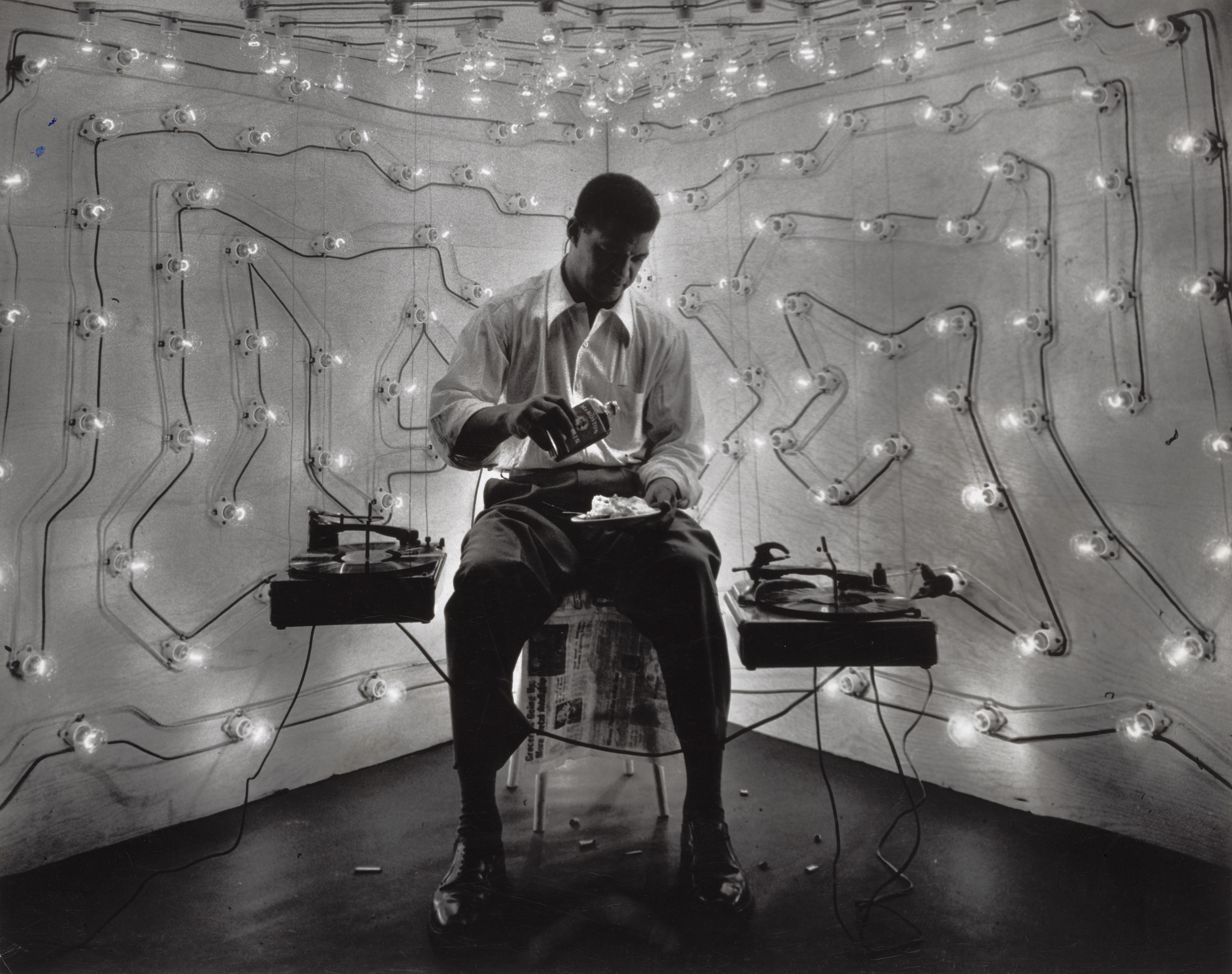
Despite the latter finding his identity through high aestheticism and the former through documentary realism, photographer Gordon Parks and the novelist Ralph Ellison are more alike than not. The “Invisible Man” exhibit at the Art Institute of Chicago does much to prove this point, while also serving as a correction of sorts.
After all, the author — the first black writer to be awarded the National Book Award — was just as groundbreaking as the photographer, who was the first black photographer at Vogue, and then Life, which featured his most famous projects. Yet when one speaks of civil rights, Parks is mentioned prominently while Ellison is seldom — if at all. Why?
The answer may very well be a definition of terms. The subversive nature of Parks’ subjects, often blacks living similarly behind the color line, was deliberate. His most famous quote has him personifying the camera as “a weapon against poverty, against racism, against all sorts of social wrongs.”
Ellison lacked these presumptions. “Invisible Man,” his 1952 novel revolving around race and marginalized communities, contains several philosophical insights on identity but ultimately implicates everyone, black white or whomever, in an inability to truly see. It makes for indispensable reading, but its existential declarations had no practical use as “We Shall Overcome” gave way to Black Power, and the concerns of the respective community shifted from the metaphysical to the tangible.
Given this schism, it is both jarring and refreshing to see them in the same space. Much of Parks’ majesty is contingent upon the proliferation of images that would be relatable to large amounts of people, while Ellison broke through the barriers of blackness by turning its parameters on their collective head. Both aspire for the universal, however, and this similarity, of type if not of method, doubtlessly influenced the handful of projects the two collaborated on.

Gordon Parks. Contact Sheet, “A Man Becomes Invisible,” Life story no. 36997, 1952. The Gordon Parks Foundation.
First came the Life magazine spread, “A Man Becomes Invisible,” announcing the release of Ellison’s novel. The marquee image, “Invisible Man Retreat, 1952,” was created by superimposing a negative of a staged scene onto an actual nighttime view of New York City’s skyline. This scene, of the narrator’s heavily-illuminated basement lair, is carried through to its own print, “Untitled, 1952,” which portrays him cleaning Louis Armstrong records for listening.
“Window, 1952” is out of focus just enough to establish the pace in which the narrator is fleeing the violence welling up inside of him over what he sees, while “The Invisible Man, 1952” shows the him lifting a manhole cover with the anxious poise of looking over one’s shoulder.
These are all the more striking with the accompanying passages from the novel, but also because they show the thing itself: The most brilliant aspect of the novel “Invisible Man” is its use of perspective; the narrator, despite going through the black experience, never actually comes out and says that he is a person of color. This implicates the reader, and does much to prove Ellison’s point: It doesn’t matter who he actually is; you’ll just project what you want onto him anyway, based on perception.

Conversely, Parks is largely wedded to showing his subjects in his photography. There is very little room for the equivocal in his art, and this essential difference between concreteness and ambiguity is problematic enough to sink the entire exhibit.
Thankfully, the curator has had the good taste to apply the logic of Ellison’s novel to the viewing of the images, by taking unreleased photographs from the Life shoot and placing passages from the novel next to them. Notable instances include a riff the book’s narrator has about Frederick Douglas placed under the photograph of a street preacher; an anonymous crowd of people walking down the street above a passage noting the danger of sleepwalkers; and a man in suit, sunglasses and a fedora eating a donut next to a meditation about how easy it is in our society to become invisible.
On the surface, it appears as though the placements merely call attention to Parks’ approach — that the passages imbue their photographic subjects with meaning. But given Ellison’s assertion that the mechanisms that bestow meaning are biased beyond repair, the fact that we know absolutely nothing about them (except for what the text selector wants us to know) is a sly irony, and does their author proud.
An ill-fated Ellison essay with accompanying photographs offers a slipshod coda to an otherwise respectable presentation. “Harlem is Nowhere” was supposed to chronicle the opening of LaFarge Clinic, the first integrated mental facility in New York City. The magazine that commissioned it went bankrupt, however, and a vast majority of Parks’ prints were lost during litigation. Along with the exhibit’s middle section (a raised glass case chock full of ephemera), as a closer this has the feeling of slightness, and does much to clutter up a small space.
Still, even this may be by design. One comes away from “Invisible Man” with the sense that, for Parks and Ellison, aesthetics and politics are inextricably linked. Perhaps a photographic package calling attention to the stigma of blacks being seen as Other, even within mental illness, in a city that has recently seen the deaths of Stephon Watts and Quintonio LeGrier by the hands of police is no different.







